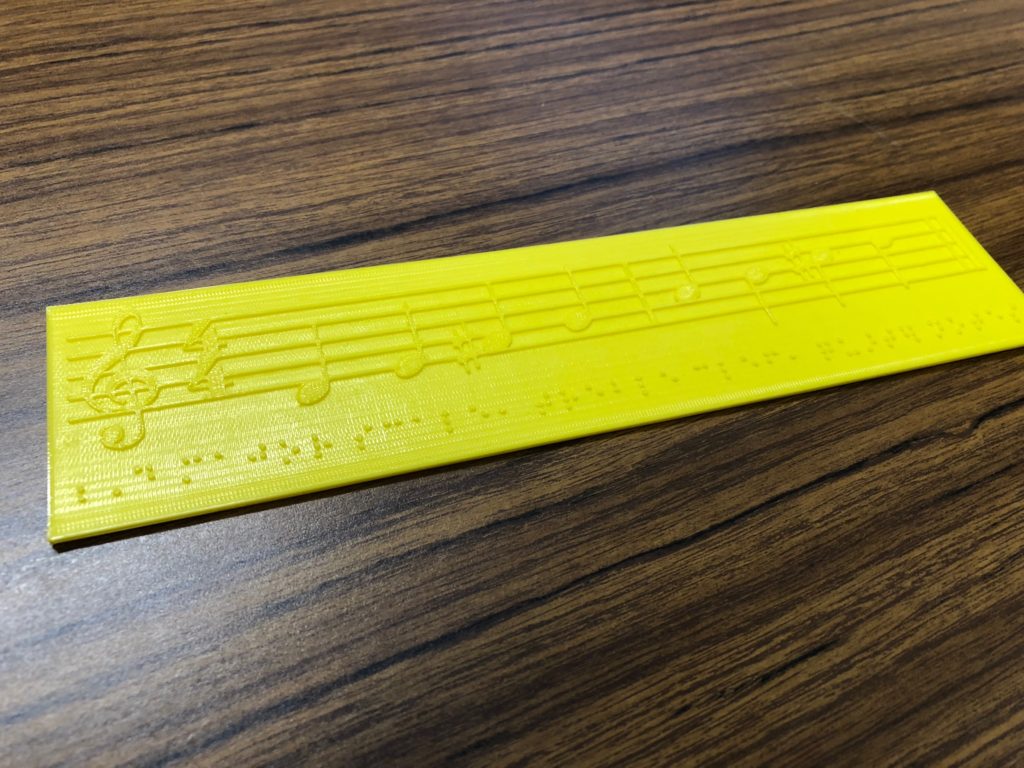
A common thought experiment in studying music composition is to develop a new system of notation. Musicians generally acknowledge that our system of staff notation is imperfect, and imagining alternatives is a way of focusing on the musical parameters that you care about most, rather than the ones that are the easiest to identify in a score.
I have a student in my Theory 1 class at WSU who is blind, so I’ve been learning a lot about braille and braille music notation. She is an excellent pianist, and I’m thankful that she is comfortable with braille already. There are estimates that fewer than 10% of legally blind Americans can read braille[1]. But even though my student has no problems reading music braille, teaching theory has already been a bit of a challenge.
Music braille, it turns out, is an ongoing experiment in developing a new form of music notation. The latest edition of the standard was published just a few years ago. If you’re familiar with staff notation[2], you’ll likely be quite surprised by how sounds are represented. Here are a few highlights:
- There is no staff.
- It uses the same characters as written braille, just interpreted in a different way.[3]
- Clefs are optional (used mostly to be academically faithful to the source). Notes are identified by letter name. ASA octave numbers are used to disambiguate when needed.
- There are different versions of letter name characters used for different rhythm values.
- Key signatures are often shown only by number of sharps or flats (“four sharps”).
- Barlines are optional.
- Beams do not exist in braille.
- Simultaneous pitches are shown by giving one note, and then a stack of intervals from that note.
- Music braille, like other forms of braille, usually takes a lot more space than staff notation. Because of this, supplementary annotations like measure numbers are often left out.
So much about how (royal) we teach music theory is tied to the staff notation we use to transmit it. In fact, I’m beginning to think that the way we think about how music is constructed has a bit of a heuristic bias informed by staff notation.
I still have to talk about staff notation in lectures, and use it in assignments, and as descriptive as I try to be, as demonstrative as I try to be singing or playing piano, there are inevitably things that get lost. A couple weeks ago, I was describing how and where on the staff to write accidentals, and this student raised her hand and politely asked if I could describe what sharps and flats looked like. I did my best, but I was a little stumped.
I did, however, recall hearing about the 3d-printing facilities in the library in one of the many, many, many orientation sessions from last month. I’m a nerd. While I’d never 3d-printed, but I’ve always thought it sounded like a cool thing. So after a couple of attempts, I figured out how to make a 3d model of a tactile major scale that I could hand my student so she would know how clefs, noteheads, and accidentals interact with the staff. She told me that the print helped her to understand things that she’d heard musicians discuss her whole life.
A few people have asked about the CAD files, and since they seemed to actually help the student, I’ll share the major scale file here. The braille is a written description, not music braille.
D major scale, treble clef, quarter notes
The object was printed on a Makerbot Replicator Z18 at the C-Space in Wichita State University’s Ablah Library.
If anyone is curious about how I went about making the 3d model, I’m happy to share what I learned. Get in touch. Maybe I’ll do another post. I’m a total n00b, but I figured it out. In the meanwhile, let me know if you use the file above and how it goes.
- To be clear, this population includes those who can see well enough to read print and screens, but the National Federation of the Blind still describes this as part of a larger literacy crisis ↩
- “Staff notation” is the name I̵7;ve settled on for the kind of notation I grew up reading. “Visual notation” doesn’t seem specific enough, and the staff is more descriptive of what it actually is, rather than how it’s read. ↩
- This is also true of letters and numbers. Special characters can precede a string indicating that it should be read as letters, numbers, or music. ↩